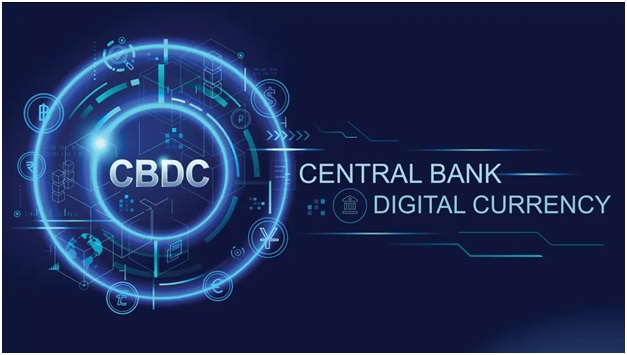SBI allows interoperability of UPI and Central Bank Digital Currency (CBDC) (The Economic Times)

- 06 Sep 2023
Why in the News?
The State Bank of India has announced the implementation of UPI interoperability in its Digital Rupee (eRupee) also called Central Bank Digital Currency (CBDC).
Context:
- Banks are making it possible for Unified Payments Interface's (UPI) Quick Response (QR) codes to work seamlessly with their central bank digital currency (CBDC) or e? applications.
- Interoperability means that the payment system can function smoothly alongside other payment systems.
- It enables system providers and participants from different systems to conduct, process, and settle payment transactions across systems without the need for involvement in multiple systems.
- As a result of this interoperability, users of the retail digital rupee will be able to make transactions by scanning any UPI QR code at a merchant's establishment.
- Additionally, merchants can now accept digital rupee payments through their existing UPI QR codes.
- This integration of UPI and CBDC is part of the Reserve Bank of India's (RBI) ongoing pilot project to promote the adoption of the retail digital rupee (e?-R).
What does UPI QR code-CBDC interoperability mean?
- Interoperability between UPI and the digital rupee ensures that all UPI QR codes can now be used seamlessly with CBDC apps.
- Initially, during the launch of the pilot for the retail digital rupee, e?-R users were required to scan a specific QR code for their transactions.
- However, thanks to the interoperability of these systems, payments can now be initiated using a single QR code.
- In this setup, the e? is stored in a digital wallet, which is connected to the customer's existing savings bank account, while UPI is directly linked to the customer's account for payments.
How will interoperability contribute to increased CBDC adoption?
- Interoperability between CBDC and UPI is poised to drive the adoption of the digital rupee, especially considering UPI's widespread use.
- Currently, UPI is a highly popular payment method, with more than 70 mobile apps and over 50 million merchants accepting UPI payments.
- In July, the RBI Deputy Governor reported that there were 1.3 million customers and 0.3 million merchants using the retail digital rupee.
- However, the daily e?-R transactions in July ranged from 5,000 to 10,000, indicating room for growth.
- The seamless integration of CBDC with UPI is expected to boost the acceptance and utilization of digital currencies in everyday transactions.
How will this benefit customers and merchants?
- The UPI and CBDC interoperability will streamline transactions for both customers and merchants, eliminating the need to switch between multiple digital platforms.
- Digital rupee users can now effortlessly make payments for everyday essentials like groceries and medications by scanning any UPI QR code at any merchant's store.
- Merchants will no longer need a separate QR code to accept digital rupee payments; they can seamlessly receive CBDC payments through their existing QR code setup.
- If the merchant has a CBDC account, the payment will be settled in their CBDC wallet. For merchants without a CBDC account, there will be an option to process payments using UPI.
What is a QR code?
- A QR code, short for Quick Response code, is a pattern of black squares arranged in a square grid against a white background, designed to be read by imaging devices like cameras.
- These codes contain information related to the item they are associated with. QR codes serve as a convenient and contactless method for various purposes, including enabling businesses to receive payments directly into their bank accounts from customers.
What is Central Bank Digital Currency (CBDC)?
- CBDC stands for Central Bank Digital Currency, which is a digital form of legal tender issued by a central bank.
- In the case of India, the Reserve Bank of India has introduced the digital rupee, known as e-Rupee.
- This digital currency holds the same value as traditional fiat currency and can be exchanged on a one-to-one basis.
- The primary distinction is its digital format.
- The launch of the digital rupee is divided into two main categories: general purpose (retail) and wholesale.
- This categorization is based on how the digital rupee is used and its accessibility levels.
- Starting from November 1, 2022, the RBI initiated its first pilot project for the use of the digital rupee in the wholesale market, specifically for secondary trade in government securities (G-secs).
- Wholesale CBDC has the potential to enhance the efficiency and security of settlement systems for financial transactions conducted by banks, particularly in the government securities segment, inter-bank market, and capital market.
- This transformation is achieved by reducing operational costs, improving collateral usage, and enhancing liquidity management.
- Subsequently, from December 1, 2022, the pilot for the retail digital rupee (e-R) was launched.
- Essentially, the retail e-rupee serves as an electronic substitute for physical cash and is primarily intended for everyday retail transactions.
- It is accessible to all, including the private sector, non-financial consumers, and businesses.
- Distribution of the retail digital rupee will be facilitated through intermediaries, such as banks.
- It does not accrue any interest and can be converted into other forms of money, such as bank deposits.
Mains Question:
- Discuss the potential advantages and disadvantages of implementing a Central Bank Digital Currency (CBDC) like the digital rupee (e-R) in India, and elucidate its possible implications on the broader financial ecosystem? (10M)
